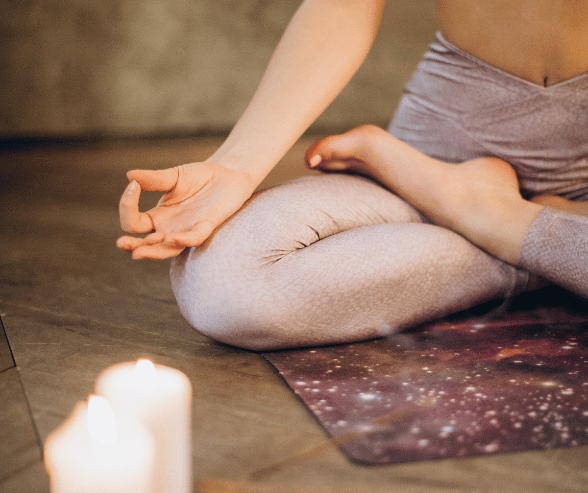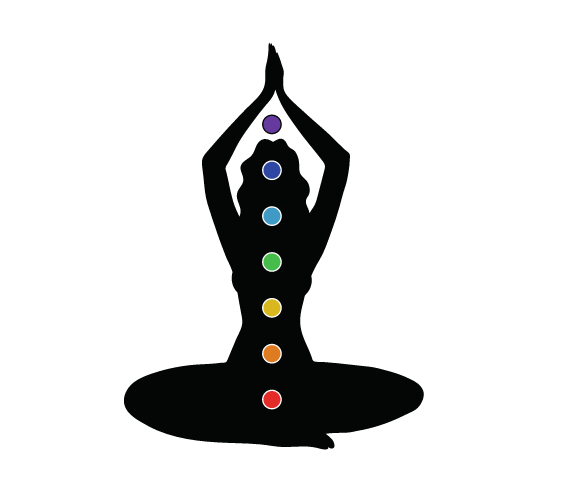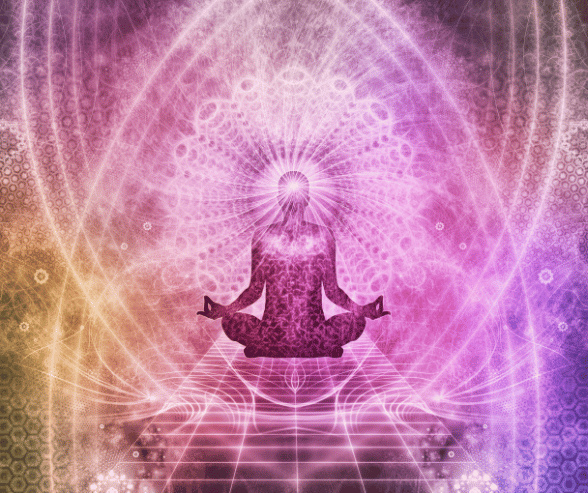Spiritual cleansing involves various practices, including energy healing, meditation, chakra balancing, etc.
If you are wondering what spiritual cleansing is and how to begin your spiritual cleansing journey, this article will be your ultimate guide. I will also debunk common misconceptions surrounding spiritual cleansing.
With that, let’s get into the details!
Spiritual Cleansing -Overview
It is commonly believed that negative energy can accumulate in an environment or person. These negative energies can lead to emotional, physical, and spiritual harm. This is where spiritual cleansing can play an effective role. It is a widespread practice followed to remove negative energy from a person or a space.
Spiritual cleansing involves clearing the negative energy of the body, spirit, and mind. Spiritual cleansing is also widely known for effectively promoting a sense of peace, harmony, and well-being.
10 Rituals for Spiritual Cleansing
Here are some rituals that you can perform for spiritual cleansing:
1. Meditation
Meditation, an ancient practice, offers numerous physical, mental, and emotional benefits. It reduces stress and anxiety and enhances mood, self-awareness, and overall well-being. First, find a quiet place, sit comfortably upright, and focus on your breath. Start with a few minutes daily, gradually increasing the duration.

2. Smudging
Smudging is a centuries-old practice employed in many cultures to cleanse spaces of negative energy. Light a bundle of sage or other herbs to smudge, let it burn briefly, then blow out the flame to create smoldering herbs. Move the smoldering herbs around the space, be careful with falling ashes or embers, and allow the smoke to fill the room. A smudging feather or fan can help disperse the smoke.

3. Salt Baths
Salt baths are effective in releasing negative energy and detoxifying the body. Epsom salt and sea salt are popular choices due to their mineral content, which soothes muscles and calms the mind. To take a salt bath, add a cup or two of salt to your bathwater and soak for 20-30 minutes. Enhance the experience by adding essential oils or herbs to the bathwater.
4. Chakra Balancing
Chakra symbols are energy centers in the body associated with various aspects of physical, mental, and emotional well-being. There are seven main chakras, each corresponding to a different color, sound, and element. Balancing chakras can be achieved through the use of crystals or meditation.

Each chakra is associated with a specific crystal, so choose one that corresponds to the chakra you wish to balance. During meditation, focus on each chakra, visualizing its balance and alignment.
5. Nature Walks
Spending time in nature allows for a connection with the Earth and the release of negative energy. Whether walking in the woods, hiking in the mountains, or sitting in a park, immersing oneself in nature promotes grounding and a sense of connection. Take time to observe and appreciate nature’s sights, sounds, and smells, allowing relaxation and unwinding.

6. Journaling
Journaling is a powerful tool for releasing negative emotions, gaining clarity, and gaining perspective. To start journaling, write down your thoughts and feelings about whatever is on your mind. Grammar, spelling, and punctuation need not be a concern; just let your thoughts flow onto the page. Prompts or guided journaling exercises can also aid in exploring specific topics.
7. Aromatherapy
Aromatherapy involves using essential oils and scents to induce relaxation and improve mood. Lavender, chamomile, and frankincense are popular essential oils for relaxation. Essential oils can be used in diffusers, baths, or inhaling directly from the bottle.

8. Yoga
Yoga combines movement, breath, and meditation to release physical tension, foster body and breath awareness, improve flexibility, and reduce stress and anxiety. With a wide range of yoga styles available, individuals can find a practice that suits their needs.

9. Sound Healing
Sound healing employs sound vibrations to promote relaxation and balance in the body. Instruments like singing bowls and chimes are often used in sound healing sessions. Listening to music or recordings of singing bowls can also aid in relaxation and the release of negative energy.
10. Forgiveness
Forgiveness is a powerful practice that facilitates the release of negative emotions and improves relationships with others. To practice forgiveness, acknowledge the hurt or anger felt toward someone else. Try to see the situation from their perspective and cultivate empathy. Ultimately, let go of negative emotions and focus on moving forward in a positive manner.

Benefits of Spiritual Cleansing
Here are some positive benefits of performing spiritual cleansing rituals:
- Reduces Stress and Anxiety: By removing negative energy, spiritual cleansing helps reduce stress and anxiety. It helps calm the mind and promotes relaxation and rejuvenation.
- Promotes Positive Energy: Spiritual cleansing promotes positive energy by removing negative energy. This helps in increasing positivity, happiness, and well-being.
- Improves Sleep: Spiritual cleansing helps improve sleep by reducing stress and anxiety. It promotes relaxation, which leads to better sleep quality and quantity.
- Enhances Intuition: Spiritual cleansing enhances intuition by promoting a clearer mind and a better understanding of oneself. It helps connect with one’s inner self, leading to better decision-making.
- Increases Creativity: Spiritual cleansing helps increase creativity by removing harmful and promoting positive energy. This leads to an increase in inspiration, imagination, and innovation.
- Boosts Energy Levels: Spiritual cleansing boosts energy levels by removing negative energy and promoting positive energy. This helps in increasing motivation, productivity, and overall energy levels.
- Improves Relationships: Spiritual cleansing helps improve relationships by promoting positive energy and removing negative energy that may affect relationships. This leads to better communication, understanding, and harmony in relationships.
When to Perform Spiritual Cleansing?
You can perform spiritual cleansing whenever you need to refresh your energy or release negative influences. Here are some instances when spiritual cleansing can be particularly beneficial:
- After a challenging or emotionally draining experience
- When you’re feeling overwhelmed, stressed, or anxious
- During times of transition or significant life changes
- Before and after engaging in spiritual practices or rituals
- When you sense stagnant energy in your home or workspace
- When you want to enhance your meditation or prayer practice
- Whenever you feel disconnected from your inner self or spiritual path
How to Perform Spiritual Cleansing?
Performing spiritual cleansing involves a combination of intention, ritual, and mindfulness. Here are some steps you can follow to create your spiritual cleansing practice:

1. Setting Intentions
Begin by setting clear intentions for your spiritual cleansing. Determine what you want to release, what you want to invite in, and the overall outcome you seek from the cleansing process. Intentions provide a focus and guide your energy throughout the practice.
2. Creating a Sacred Space
Find or create a space where you can perform your spiritual cleansing ritual. This can be a designated altar, a corner of your room, or any space where you feel comfortable and undisturbed. Clear the space of clutter and energetically cleanse it using sage, palo santo, or your preferred method.
3. Selecting the Right Method
Choose a method of spiritual cleansing that resonates with you. You can combine different techniques or experiment with various methods to find what works best for you. Trust your intuition when selecting the method that aligns with your intentions and energy.
4. Performing the Cleansing Ritual
Follow the specific instructions of your chosen spiritual cleansing method. Meditating, smudging, taking a salt bath, or using sound healing tools like singing bowls, fully present and engage in the process. Visualize the negative energy leaving your body or space as you cleanse.
5. Grounding and Protection
After the cleansing ritual, it’s important to ground yourself and protect your energy. You can achieve this by connecting with nature, walking barefoot on the earth, or visualizing roots grounding you to the earth’s core. Use protective visualizations or wear protective crystals to shield your energy.
Common Misconceptions about Spiritual Cleansing
There are some common misconceptions surrounding spiritual cleansing that need clarification. Let’s address a few of them:

- Spiritual cleansing is not connected to any specific religion: While some spiritual cleansing practices may be associated with certain religious or cultural traditions, spiritual cleansing itself is not limited to any particular belief system. It is a universal practice that can be adapted and personalized to suit individual preferences and beliefs.
- Spiritual cleansing does not require belief in spirituality: One doesn’t need to have a specific spiritual belief system to benefit from spiritual cleansing. The practices are focused on energy and intention, making them accessible to anyone, regardless of their belief or faith.
- There are no inherent risks or side effects: When performed with proper intention and respect, spiritual cleansing practices are safe and do not have any inherent dangers or side effects. However, it’s essential to approach any practice with mindfulness and seek guidance if needed.
- Spiritual cleansing is not a substitute for medical treatment: While it can improve mental and emotional well-being, it is not a substitute for medical treatment. It’s essential to seek professional help for any physical or mental illness and use spiritual cleansing practices as a complementary tool.
- It doesn’t require unique materials: While some practices may involve specific materials such as herbs or crystals, they are unnecessary for spiritual cleansing. One can practice spiritual cleansing using visualization and intention alone.
- Spiritual cleansing is not a one-time fix: Like any practice, spiritual cleansing requires consistency and dedication to see long-term benefits. Incorporating spiritual cleansing practices into one’s routine is essential to maintain positive energy and intention.
Related Reads:
- Discover the High Vibrational Foods for Optimal Energy
- Top Mindvalley Courses To Transform Your Life
Conclusion
Spiritual cleansing is a transformative practice that allows us to release negative energy, restore balance, and cultivate a deeper connection with ourselves and the world around us.
By engaging in spiritual cleansing methods such as meditation, energy healing, smudging, salt baths, and prayer, we can experience emotional well-being, increased energy, mental clarity, strengthened intuition, and enhanced spiritual connection.
Incorporating spiritual cleansing into our daily lives through morning and evening rituals, clearing objects and spaces, self-care, and connecting with nature allows us to maintain a harmonious state of being. Remember, spiritual cleansing is a personal journey of self-discovery and growth. Embrace it with an open heart, allowing it to guide you toward inner harmony and vitality.
